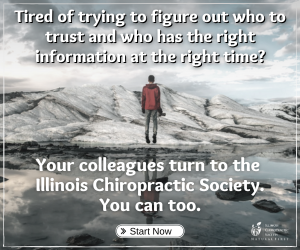
Detoxification Basics, Part 2: Liver Support and Detoxification

We discussed the basics of intestinal detoxification in my last article. The gold standard 4-R Program consisting of Remove, Replace, Reinoculate and Repair is the best place, to begin with when a patient presents with multiple issues, based in inflammation. Once the GI system is running smoothly, the liver can regain the ability to dump stored toxins. This is clinically warranted when the patient is still experiencing fatigue, a temporary plateau during a weight loss program, headaches, neurological symptoms like Parkinson’s, Alzheimer’s or peripheral neuropathy, anxiety, depression, and autoimmune issues. Let’s review the detox machinery of the liver, including the nutrients and antioxidants involved; potential issues within the detoxification process and the expected results; and finally a process to optimize liver function.
Phases
We are exposed to a plethora of toxins all the time. Pesticides, heavy metals, industrial pollutants, and preservatives; and that’s before we have breakfast! Because we are exposed daily, detoxification needs to be addressed daily. This process begins with the liver, which filters 2 quarts of blood every minute. There are two generally accepted phases of detoxification. During Phase 1, lipid-soluble exo- or endo-toxins are taken into a series of cytochromes — think tunnels with enzymes. The enzymes catalyze reactions such as oxidation, reduction, hydrolysis, hydration, and dehalogenation, which occur in the tunnel. What comes out are intermediary metabolites, which are less lipid soluble, but potentially more polar and highly reactive. Assuming proper function, Phase 2 is immediately available to take these intermediary metabolites into conjugation pathways. These pathways include reactions like sulfation, glucuronidation, glutathione and amino acid conjugation, acetylation and methylation. The original toxins are now polar and water soluble.
Phase 1
- B-complex vitamins,
- Glutathione,
- branched chain amino acids,
- Phospholipids,
Phase 2
- Vitamins, A,C,E,
- Minerals Cu, Se, Mn, Zn,
- CoQ10,
- Thiols (sulfur containing vegetables),
- Bioflavanoids,
- Silymarin,
- Pycnogenol,
Phase 3
- Glycine,
- Taurine,
- Glutamine,
- N-acetylcysteine,
- Cysteine,
- Methionine
As you can see, Phase 1 and 2 need entirely different nutrients. Intermediary metabolites, which are highly reactive and sometimes more toxic than the original substance, are quelled by antioxidants and phytochemicals. A mixed diet for patients including lean proteins and plenty of vegetables certainly makes a positive impact on their livers to function optimally. Additionally, in this toxic environment supplements can be very useful. Silymarin at high doses is very well tolerated. 600mg of silymarin (standardized to 240mg of silybin) TID is very well tolerated and will give the patient good bioavailability. A phytosome-silybin granule was also studied and shown to provide the best bioavailability. I personally use AdvaClear from Metagenics which does contain silymarin, but also contains all the necessary Phase 1 and 2 nutrients, along with several other potent antioxidants.
Potential Issues
The issues in the system are similar to what could happen on an assembly line. There are four main challenges. First, excessive exo-or endogenous toxins will obviously overtax the system. Second, either or both Phases can be slow. Third, if Phase 1 is fast or Phase 2 is slow, intermediary metabolites will build up. The intermediary substances are highly reactive and cause premature aging. Finally, if both are slow, substances are not being detoxed properly at a proper speed resulting in further accumulation. Clinically, this is the very sick, sensitive-to-everything patient, who will require an extra measure of patience and time.
Reasons for slow Phase 1 and 2 include:
- SNP’s, single nucleotide polymorphism or genetic variability
- certain drugs
- natural substances
- bergapten from bergamot or citrus seed oils
- narigenin from grapefruit juice
- quercitin with the highest source of quercitin from black and green teas
- viruses
- arachidonic acid
- heavy metals
- nutritional deficiencies
- gut-derived lipopolysaccharides(LPS)
There are nutritional solutions to each of these issues. Epigenetics tells us that our gene expression will respond to nutrition. Dietary modification to a Mediterranean/paleo lifestyle will decrease the toxic load and provide appropriate nutrition for the detoxification mechanisms and free radical scavenging of the reactive intermediary metabolites. Please remember the GI detoxification should happen prior to the liver detoxification. Moving toxins out of the liver and into a sluggish bowel create autointoxication and, frankly, a very cranky patient with exacerbated symptoms.
The protocol I use for liver detoxification is similar and can follow the GI detox described previously. I use Core Restore from OrthoMolecular or the Clear Change program from Metagenics. The patient will continue their elimination diet or be placed on a Mediterranean/Paleo diet. Both companies have questionnaires that can be used to determine how toxic a particular individual may be and this will help you determine how long they will need to detox. Some of your really sick patients may not tolerate a quick detox. In these cases, just do it longer and more slowly. From my experience, it is still effective.
Conclusion
A little practice tip: Perhaps the most difficult part of working with patients through detox is patient compliance. A significant portion of our position is to teach, inspire and motivate our patients. You can give choices to the patient as long as they understand the ramifications of their choice. Strongly recommend the best choice to fit the patient, not necessarily the one you think they want to hear. Step up and be the doctor! Other doctors tell the patient exactly what the treatment plan is for the presenting condition. The doctor is not looking for self-approval. That being said, I typically recommend a month for the liver detoxification to be most effective. So, the total detox time is 2 months. If you think about it, this is less than .5% of a patients’ potential 100 years of lifespan. Their quality of life will be dramatically improved. Help them understand that this is a short time, and will be worth it. Let them know if they maintain a similar diet post-detox, they won’t HAVE to do this again, which will save them time and money. Their supplement regime will support continued detoxification. Remember that other health care practitioners do not hesitate to tell patients what they need. As a physician, you have an obligation to tell the patients what they need. As always, I am available to answer any questions you may have about nutrition in your practice.

















